Brown pigs have a more strange and colorful appearance than white pigs. For the most part, they do not fundamentally different in many ways from white pigs.
The only distinctions are that they gain weight faster without accumulating larger layers of fat, but if we look more closely, some white breeds as the Landrace pig have the same characteristic.
The second difference is their brown and thick fur, which gives them protection against the cold and ultraviolet rays, being less prone to burns than white breeds. Otherwise, brown pigs have the same habits and characteristics as any other pig.
Duroc
The first pig from our list of brown pigs is Duroc. This pig was created by crossing the Old Duroc pig from New York with the Red Jersey pig from New Jersey between 1822 and 1877.
What is special about the Duroc pig is its thick and brown fur. In the case of some Duroc pigs, their fur can be reddish-brown, reddish, yellow-golden, or a very dark red towards mahogany.
The fur of the Duroc pig has the role of protecting it from low temperatures. During the warm season, the Duroc pig molts, remaining completely bald. The molting process allows it to survive successfully during the summer season.
In general, the purebred Duroc pigs have brown or reddish-brown fur, but there is also the so-called “White Duroc”, which can only be obtained through a selective crossbreeding process.
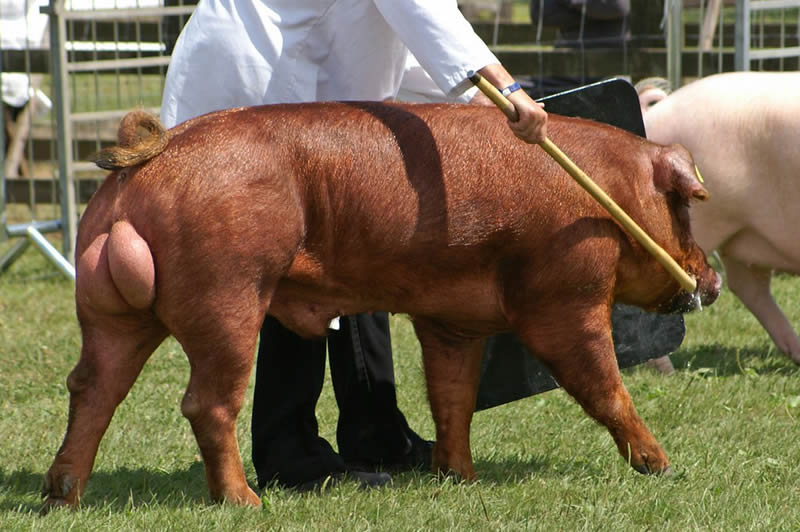
Related videos:
Tamworth pig
The Tamworth pig is popular for the fact that it can reach a fairly high weight without having a high body fat content. Its meat is lean and is mainly used to make bacon. In fact, the Tamworth pig inherited the nickname of “bacon pig”.
The Tamworth pig was not always brown. This breed of pigs had an orange and purple color, but through continuous breeding, these colors were replaced by pale red or dark brown. Their brown fur protects them from the cold in the cold season and the harmful ultraviolet sun rays during spring.
Tamworth pigs start molting in the summer months of June and August. As a consequence, the Tamworth pig has less fur to protect it from the sun’s harmful rays and can suffer from burns.
That’s why you always find these brown pigs in the shade of trees, or a muddy area because the mud gives them a chance to cool off.
Listed as a threatened species, the Tamworth pig can be found in the United Kingdom, Australia, the United States, New Zealand, and Canada.
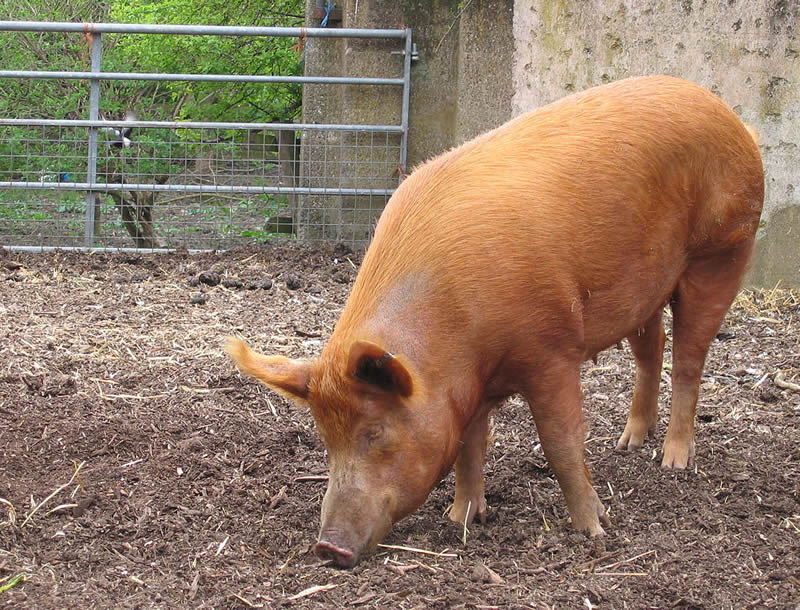
Related videos:
Rotbuntes Husumer
To find out the secret of the fur color of this brown pig called The Danish Protest Pig, we have to take a closer look at its history.
The history of this pig began in the 19th century during the war between Denmark and Prussia, which started due to a misunderstanding of the drawing of the border. The first war from 1848 was won by Denmark, but Prussia triumphed in the second war. Thus, Prussia became the master of the southern Jutland Peninsula and forbade the Danes on the peninsula to wear the flag of Denmark.
The farmers were extremely dissatisfied with this ban and fought back by creating a pig similar to the flag of Denmark. They crossed the Holsteinian and Jutlandian marsh pigs, the English Tamworth pig, and red variants of the Angeln Saddleback. The result was a brown pig with a white belt.
The pig was named The Protest Pig and was declared a cultural symbol.
The Danish Protest pig was declared a breed in 1954. But after 1968, it was thought that this pig became extinct. At the moment, there are only 140 specimens in the world and they all live in zoos in Germany.
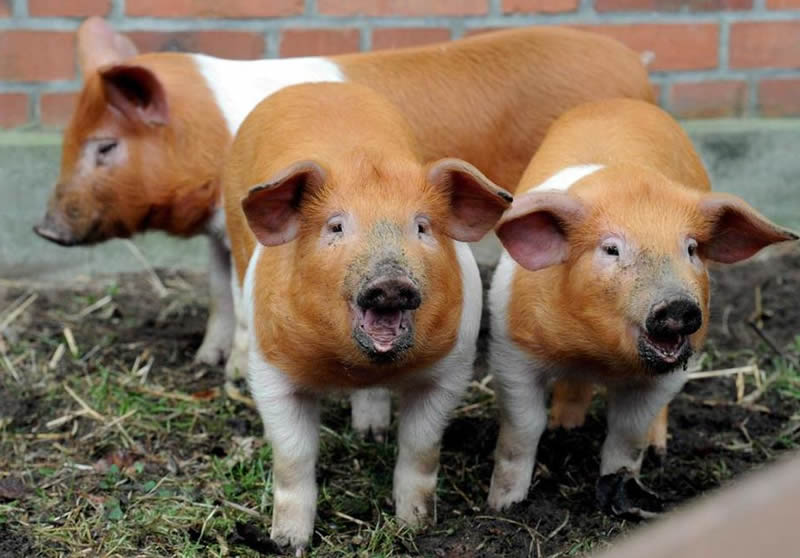
Hereford pig
A large number of farmers worked to create the wonderful Hereford pig. The first person who imagined this pig with this color pattern was R.U. Weber of LaPlata, Missouri. The creation of these brown pigs was mainly influenced by the appearance of Hereford breed cattle. This is also where the name of this pig comes from.
The Hereford pig was successfully created in 1925 in Iowa and Nebraska by crossing Duroc and Chester White or Hampshire pigs. The breed has been protected and supported by the National Hereford Pig Registry Association over the years.
So, these brown pigs boast a unique pattern, a different conformation from other breeds of pigs, and have a small number of specimens alive.
In 2013, the Hereford pig population was around 2,000.
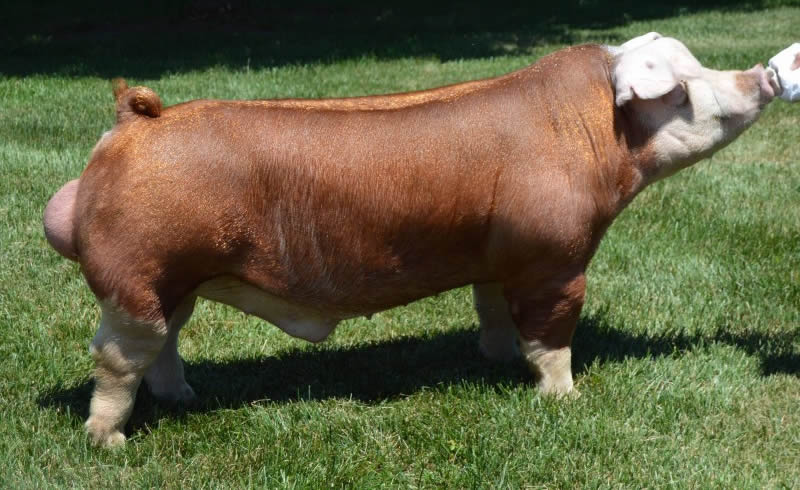
Related videos:
Oxford Sandy and Black
No one knows how the Oxford Sandy and Black pigs appeared. Some would say that this breed was born from a cross between old Berkshire and Tamworth, but this could not be confirmed. What is known is that the name of these pigs was inspired by their appearance and their pattern of brown color and black stripes.
Like the other brown pigs in this list, the Oxford Sandy and Black pigs are less prone to burns due to their thick fur.
The Oxford Sandy and Black pigs are the oldest native pigs of Great Britain and have twice reached the brink of extinction, but fortunately, they continued to exist.
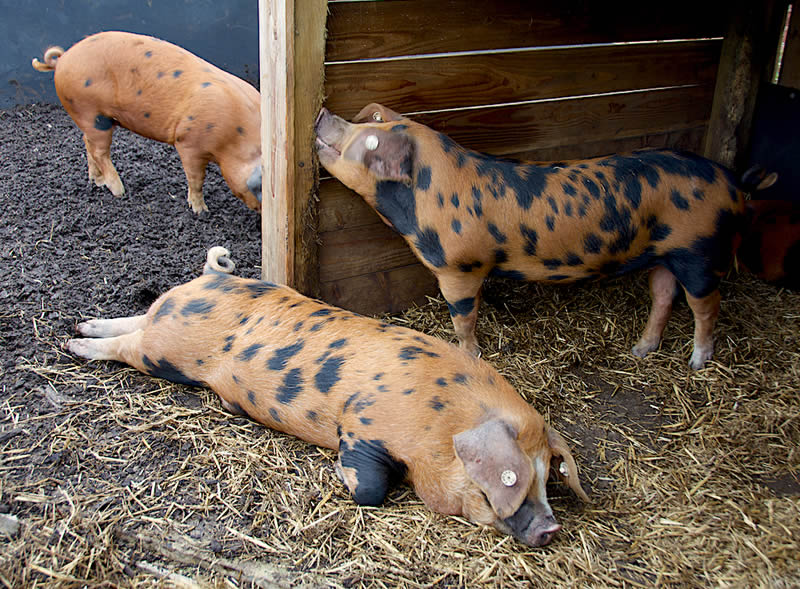
Related videos:
The Red Wattle
The origin of the Red Wattle pig is shrouded in a true mystery.
Neither the location where it appeared nor the breeds involved in the crossing are known. However, the Red Wattle pig has not enjoyed popularity throughout history. It was only in 1980 that farmers started to be interested in this breed of brown pigs.
On the occasion of this interest, in 2001 the Red Wattle pig Association was founded, which supports and encourages farmers to support this breed of pigs.
The Red Wattle pig is on the threatened list of the American Livestock Breeds Conservancy.
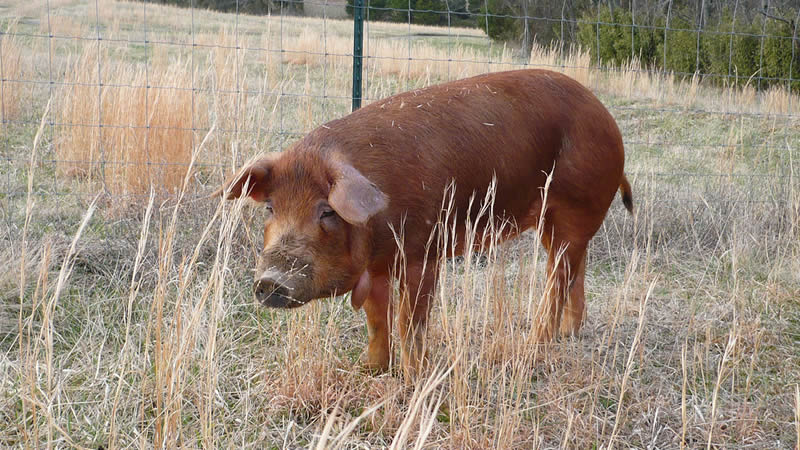
Related videos:
Leave us a comment and tell us if you have ever raised brown pigs on your farm. Would you ever choose to raise brown pigs over white pigs?

